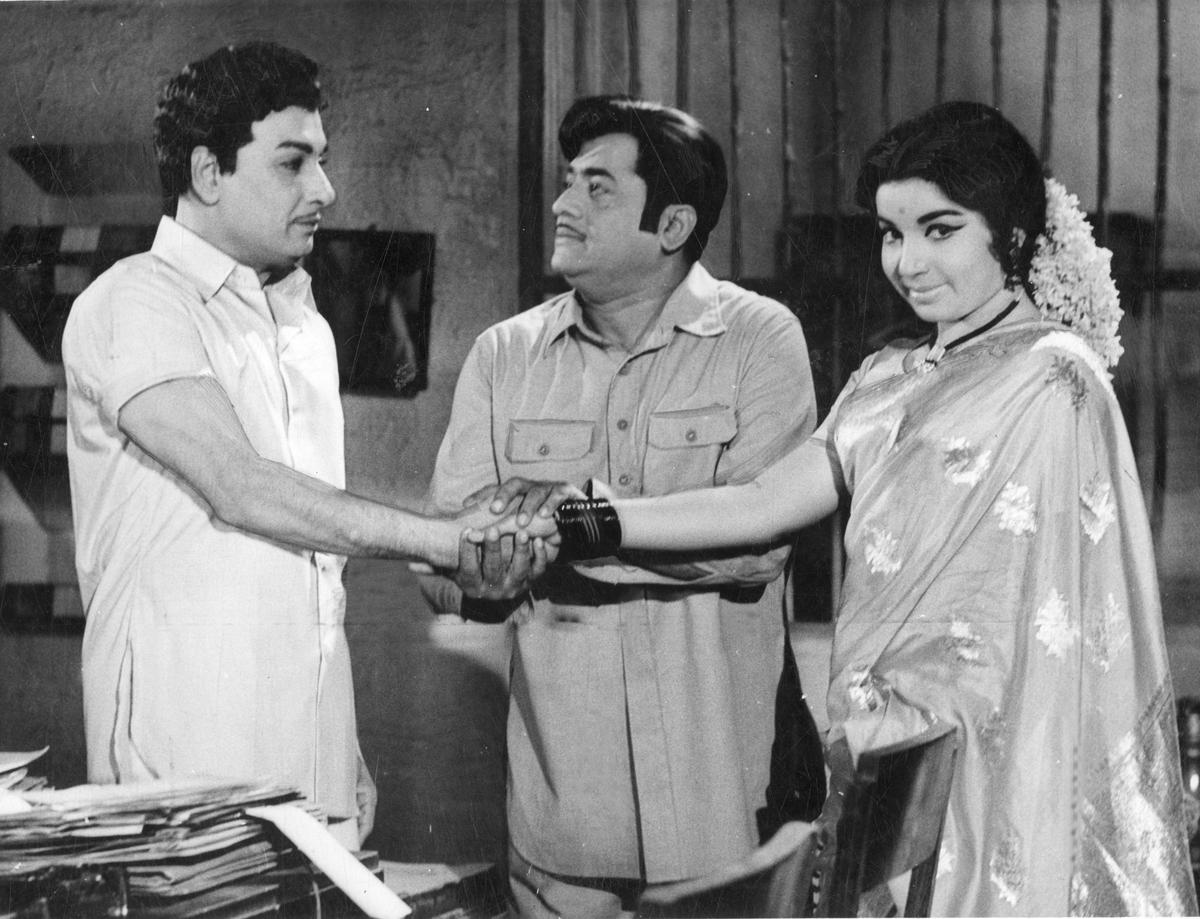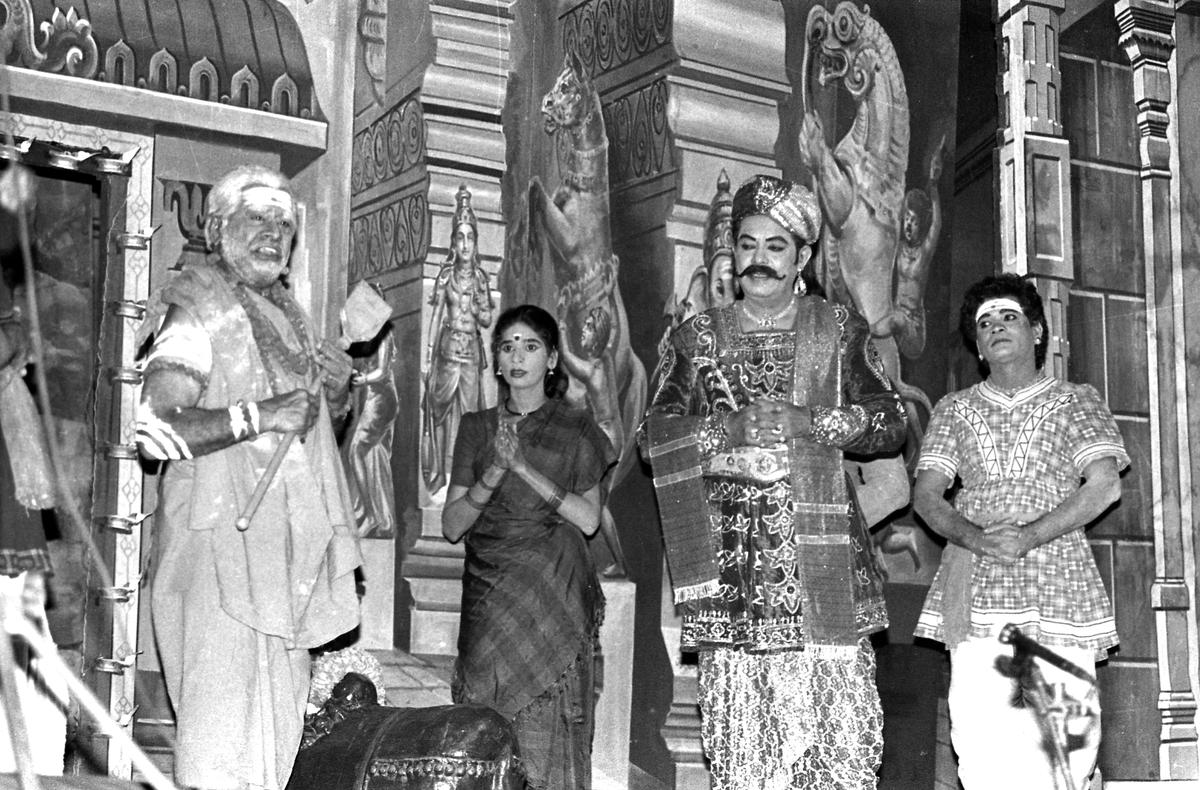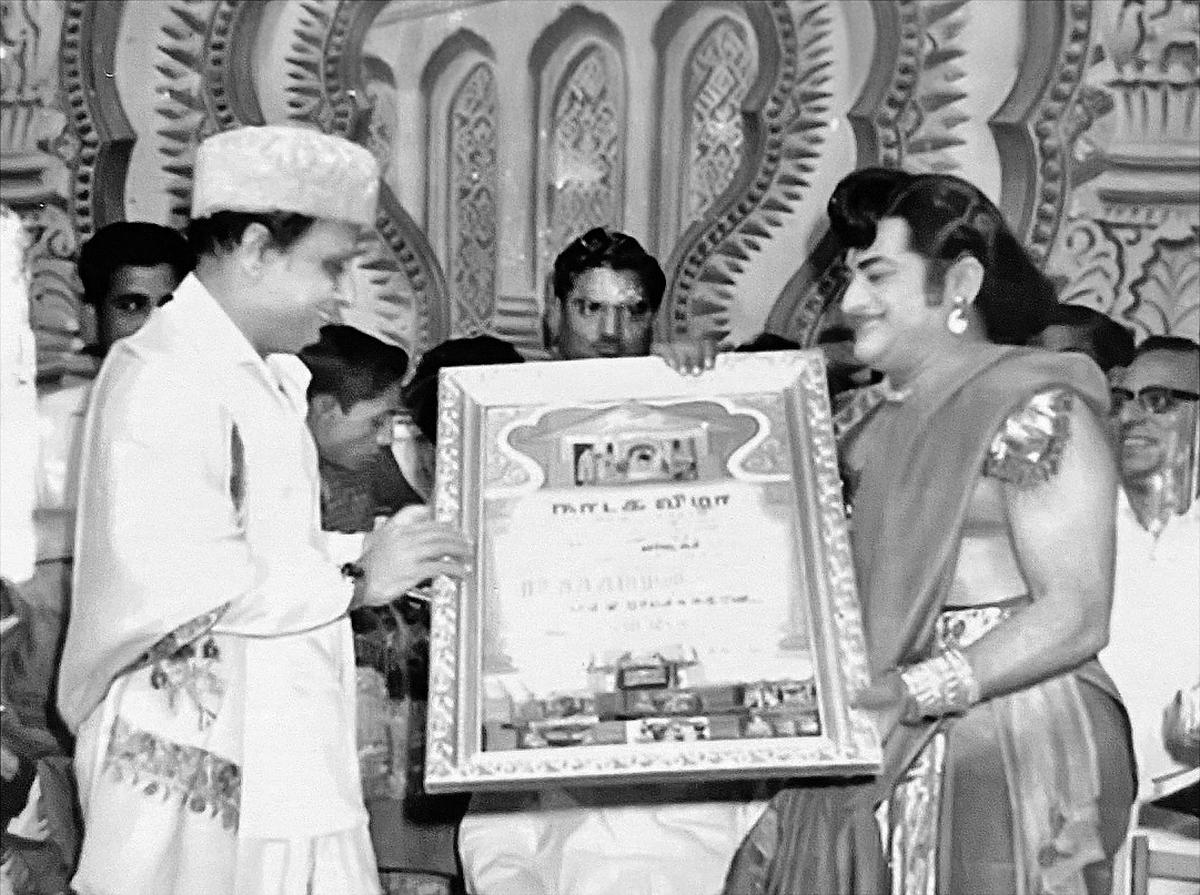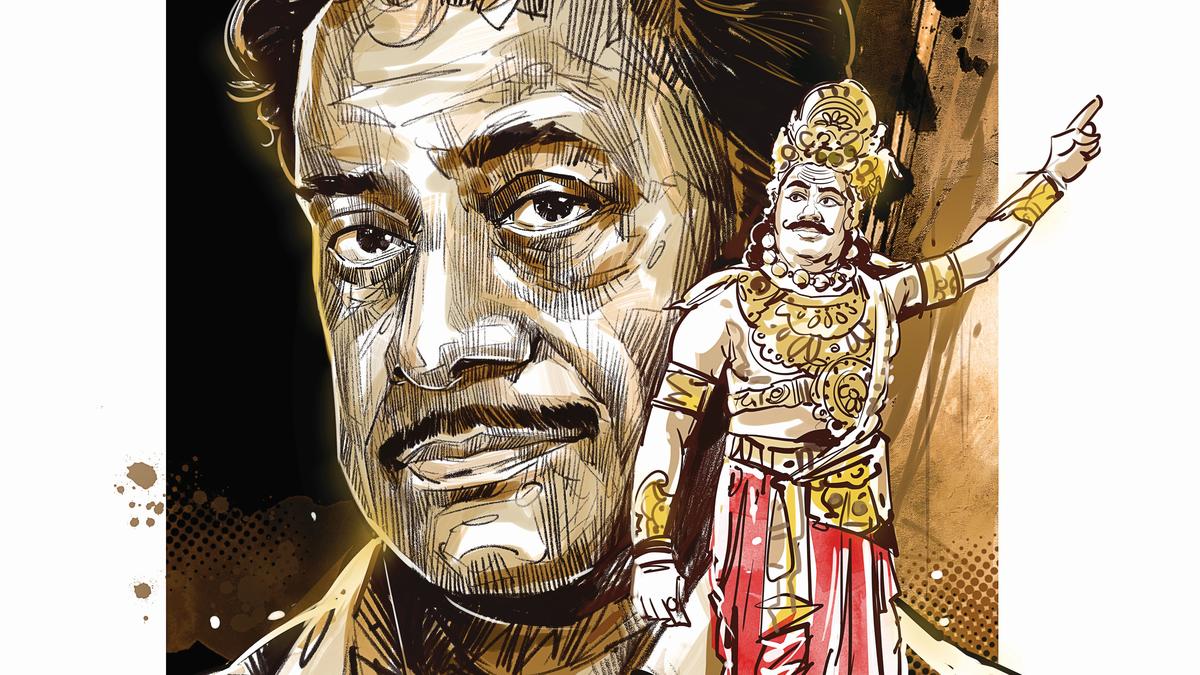The 1950s was a pivotal decade in Tamil theatre. A major change to happen was the shift in focus from historical and mythological subjects (a staple those days) to social themes and drawing-room dramas. With the legendary Nawab Rajamanickam in the last phase of his active theatre life, it looked like it was curtains down for the historical and mythological genres. That they continued to thrive for more than three decades after this, was after that was largely due to the efforts of theatre and film actor, R.S. Manohar, whose birth centenary is being celebrated this year.
Born on June 29, 1925, to Rajalakshmi and R. Subramania Iyer, an inspector in the Postal Department, Manohar was named Lakshminarasimhan at birth. As his father ather was in a transferable job, Lakshminarasimhan had his early education at various places, including Namakkal and Bellary, before moving to Madras, where he studied at the Muthiah Chettiar school and later at the Ramakrishna Mission High School in T. Nagar. He did his B.A. from the Pachaiyappa’s College. After working with the Imperial Tobacco Company for a short while, he quit his job and joined the Postal Department.
R.S. Manohar in the play Atchipeedam.
| Photo Credit:
Courtesy: S. Shivpprasadh
Lakshminarasimhan’s interest in theatre dated back to his school days, when he acted in one-act plays. His first major play was Rajabhakti, enacted by the students of Ramakrishna Mission High School. He then went on to act in a few more plays while studying at the Pachaiyappa’s. The story of how he came to be christened Manohar, is also well-known — he substituted for the lead actor at the last minute in the popular play, Manohara, and the name stuck on.
Manohar continued performing on the stage, even while working, and was associated with troupes such as the Egmore Dramatic Society, Nataraja Amateurs and the YMIA. In 1951, his performance in the play Marumalarchi caught the attention of screenwriter A.T. Krishnaswamy and director R.M. Krishnaswamy, who were looking for a fresh face for their upcoming movie Rajambal. Manohar fit the bill and thus began a successful stint on the big screen. He performed in over 200 films — Kaidhi Kannayiram, Vallavanukku Vallavan, Ayirathil Oruvan, Adimai Penn and Ulagam Suttrum Valiban — to name just a few. Despite sharing the screen with two of the biggest heroes of the era — MGR and Sivaji Ganesan — Manohar carved his own niche in cinema, but the stage remained his first love.

Manohar with M.G. Ramachandran and J. Jayalalithaa in the 1969 Tamil film Nam Naadu.
| Photo Credit:
THE HINDU ARCHIVES
Manohar started National Theatres on November 14, 1954. Interestingly, the first few productions such as Inbanaal, Alavukku Meerinaal and Ulagam Sirikkiradhu were based on social themes.However, Ilankeswaran was its biggest hit in the mythological genre. It was written by Thuraiyur Murthy. Premiering in Madras in 1956, it had a tremendous run in India as well as abroad, in countries such as Sri Lanka, Malaysia and Singapore — with nearly 2,000 shows being performed over the next three decades. It was based on a version of the Ramayana, which portrayed Ravana as the father of Sita and attracted its share of controversies too. Manohar went on to produce plays such as Indrajith, Narakasuran, Sisupalan, Chanakya Sabadham, Malik Kafur, Dronar, Soorapadman, Kadaga Mudhreyan, Ottakoothar and Viswamitrar. In all, National Theatres had 31 plays and around 7,950 shows to its credit. The audience was held in thrall as much by the acting as by the grandiose on the stage. Special effects employed to portray scenes left them baffled, too. Separate rehearsal sessions, spanning two to three days, were held exclusively for the technical team to execute the trick scenes.

From R.S. Manohar’s play Thirunavukarasar staged at The Music Academy on August 24, 1994.
| Photo Credit:
SRIDHARAN N
Watching a performance of Ilankeswaran in Madras in 1980 and impressed by the special effects, the famous ad-man Bharat Dabholkar invited Manohar to Bombay to collaborate with him for Last Tango in Heaven, a play written by him.The audiences there too, were completely floored by Manohar’s stagecraft and the play had a successful run of around 70 shows. Manohar constantly worked towards giving the audience a unique experience, introducing a technique called dramascope, where the sets spanned across the entire stage with a stereophonic sound system.
National Theatres completed its Silver Jubilee in 1979. A committee with Justice S. Mohan as the chairman, V. Emberumanar Chetty as the secretary and dignitaries such as C.R. Pattabiraman, MAM Ramaswamy, V.G. Panneerdas and Sowcar Janaki was formed to celebrate the occasion and a grand function was held in April 1980.
In 1991, Manohar was appointed the secretary of the Iyal Isai Nataka Mandram by former Chief Minister J. Jayalalithaa, who professed an ardent admiration for his plays. It was also at her behest that he staged Thirunavukkarasar in 1994. Presiding over a performance in November that year, she bestowed the title of Nadaga Chemmal on him. The music for the production was composed by violin maestro Kunnakudi Vaidyanathan, who was then the president of the Iyal Isai Nataka Mandram. In 1992, the government also produced Velicham, a play on prohibition under Manohar’s guidance.

The veteran actor is receiving the Nataka Kavalar award from former Chief Minister M.G. Ramachandran.
| Photo Credit:
Courtesy: S. Shivpprasadh
Manohar was also bestowed with titles such as Nataka Thilakam, Nataka Kala Chakravarthy and Nataka Kavalar. He passed away in 2006. Today, his memory and legacy are kept alive by his nephew S. Shivpprasadh and grand-daughter S. Sruuthi, who have revived some of his plays such as Dronar, Kadaga Mudhreyan and Chanakya Sabadham.
Published – July 18, 2025 02:55 pm IST

